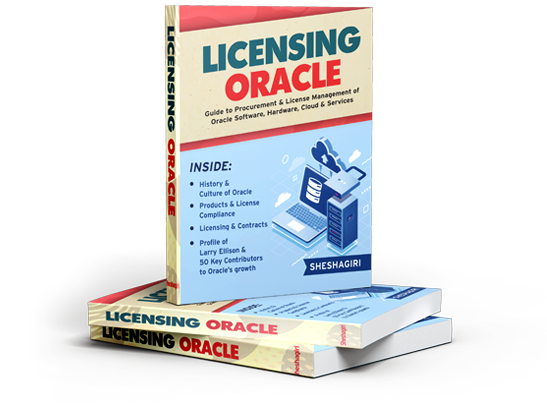Understand Java Licensing with Oracle ULA for Cost-Effective Compliance
Oracle Java License Change refers to updates in Oracle's licensing policies for Java SE, impacting how businesses access and use Java.
In the world of enterprise software, Java Licensing has become one of the most important topics for organizations using Java-based applications. With Oracle’s evolving licensing policies and the introduction of the Oracle ULA (Unlimited License Agreement), companies need a clear understanding of how to manage their Java deployments while ensuring cost-efficiency and compliance. This article explores what Java licensing entails, how Oracle ULA works, and the best practices for businesses to stay compliant and save money.

Understanding Java Licensing
Java Licensing refers to the rules and agreements governing the use of Oracle’s Java software. Since 2019, Oracle has made significant changes to how Java is licensed, moving away from a free model to a subscription-based one for commercial use. This means that while individuals and developers can still use Java for personal or development purposes, organizations using Java in production environments are required to have valid licenses.
Java’s popularity as a programming language means it’s deeply integrated into enterprise systems. From backend applications to business software, Java powers millions of applications worldwide. However, as Oracle introduced commercial licensing for Java SE (Standard Edition), many organizations faced challenges understanding how to calculate their usage, assess compliance, and optimize costs.
Oracle’s Java SE subscriptions now include access to updates, security patches, and technical support — all essential for maintaining a secure environment. Without a proper license, businesses risk non-compliance, which can lead to audits, penalties, or unexpected costs.
****
What Is Oracle ULA (Unlimited License Agreement)?
The Oracle ULA, or Unlimited License Agreement, is a unique contract offered by Oracle that allows organizations to deploy an unlimited number of Oracle products, including Java, for a specific period (usually three to five years). It provides companies with flexibility, predictability in costs, and simplified license management.
Under a typical ULA, businesses pay a fixed upfront fee that allows them to deploy Oracle software without worrying about individual licensing counts during the agreement term. At the end of the ULA period, organizations must “certify” the number of licenses they are using, which then becomes their permanent entitlement.
When applied to Java Licensing, the Oracle ULA can be particularly beneficial for enterprises with widespread Java usage. It helps them avoid the complexities of tracking every installation, user, or server running Java SE. Instead, they can focus on their operations and certify at the end of the agreement.
****
Benefits of Using Oracle ULA for Java Licensing
Cost Predictability Oracle ULA offers a fixed cost over a defined term, allowing organizations to budget effectively. Rather than facing unexpected licensing costs due to audits or additional usage, companies know exactly what they’ll pay for the duration of the agreement.
Simplified Compliance One of the biggest challenges in Java Licensing is ensuring compliance across multiple systems and departments. The Oracle ULA simplifies this by providing unlimited usage rights, which significantly reduces compliance risks.
Scalability and Flexibility Businesses often grow, deploy new servers, or add new environments. With Oracle ULA, companies can scale freely during the agreement term without worrying about licensing limits.
Audit Protection Oracle regularly audits organizations to verify license compliance. With a ULA, businesses gain protection from most of these audits, since unlimited usage rights eliminate the need for constant license tracking.
Strategic Advantage For enterprises planning mergers, acquisitions, or large-scale cloud migrations, Oracle ULA offers flexibility. It ensures that all Java deployments during these transitions remain compliant and covered.
****
Challenges and Risks of Oracle ULA
While Oracle ULA has clear advantages, it’s not without its challenges.
Certification Complexity At the end of the ULA term, organizations must “certify” their usage — a process that can be complex and time-consuming. If not done accurately, it can lead to non-compliance or higher future costs.
Overpayment Risk Some businesses enter a ULA without fully understanding their actual usage needs. If they don’t deploy enough software to justify the cost, they might end up overpaying for unused capacity.
Post-ULA Restrictions After certification, any new Java deployments beyond the certified count will require new licenses. Without proper planning, this can result in additional costs after the ULA ends.
Vendor Lock-In Oracle ULA can create dependency on Oracle products and services. Once tied to a ULA, transitioning to alternative licensing models or open-source Java distributions may become difficult.
****
Best Practices for Managing Java Licensing with Oracle ULA
To make the most of Java Licensing under an Oracle ULA, businesses should follow some best practices:
Conduct a License Assessment Before entering a ULA, perform a thorough audit of your current Java deployments. Understand how many systems are running Java SE and which versions are used.
Plan for Certification Early Don’t wait until the end of the ULA term to begin certification. Start tracking deployments early to ensure accurate reporting.
Use Discovery Tools Leverage license management tools or software asset management (SAM) systems to monitor Java usage across your environment.
Engage Licensing Experts Oracle licensing can be complex. Engaging with a licensing consultant or expert can help interpret contract terms, optimize usage, and avoid compliance pitfalls.
Evaluate Alternatives
Consider evaluating open-source Java distributions such as OpenJDK, Amazon Corretto, or Eclipse Temurin. These alternatives can help reduce long-term costs while maintaining compatibility. 
****
Future of Java Licensing and Oracle ULA
As Oracle continues to refine its licensing models, Java licensing will remain a critical issue for organizations worldwide. The shift toward subscription-based licensing emphasizes the importance of understanding contractual obligations and usage rights. The Oracle ULA model, when used strategically, offers a practical way to manage costs and maintain compliance in large-scale Java environments.
However, businesses should not assume that a ULA is always the best solution. Each organization’s software landscape and growth strategy should dictate whether a ULA, subscription, or open-source alternative makes the most sense.
****
Conclusion
In summary, Java Licensing and Oracle ULA are deeply connected elements of enterprise software management. The ULA model provides flexibility, scalability, and compliance benefits for organizations with extensive Java usage. However, it also requires careful planning, certification management, and expert oversight. By understanding how Oracle ULA works and adopting smart licensing strategies, businesses can ensure compliance, control costs, and maintain the freedom to innovate confidently in their Java environments.